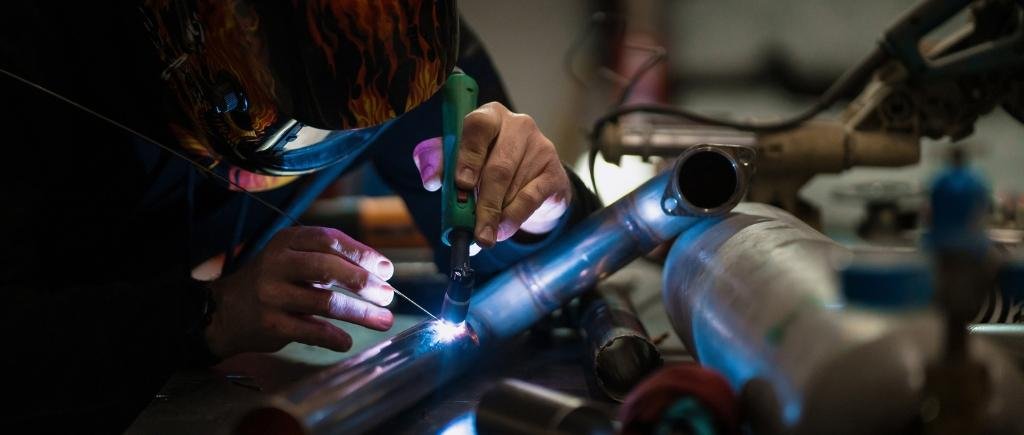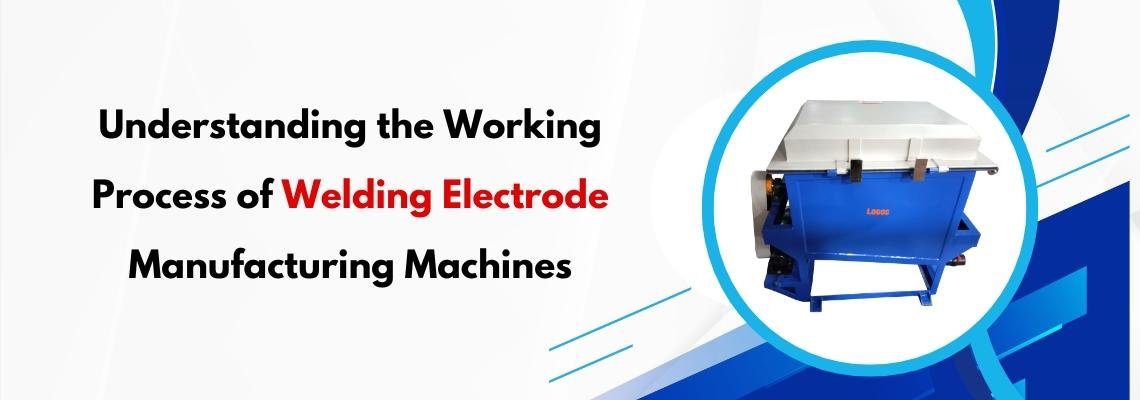Welding electrode manufacturing process starts with selecting the right raw materials. In this blog, we will walk through each step in simple terms so you can see how welding electrodes are made by machines. You’ll learn how the raw mix becomes a finished electrode, ready for welding tasks.
1. Raw Material Preparation
Every electrode begins as a mix of metal powders and binding materials. Typical ingredients include iron powder for strength, mineral powders for coating, and small amounts of clay or starch to hold the coating in place. Machines weigh each ingredient precisely to keep the mix balanced.
- Weighing: A digital scale on the machine measures each powder.
- Blending: A mixer tumbles the powders until they form a steady blend.
- Storage: The mixed powder moves into a hopper, ready for the next stage.
Keeping the right ratio of powders ensures that the finished electrode has good strength and coating quality.
2. Slurry Mixing
The blended powder is turned into a wet mixture called a slurry. Water or light oil is added so the powder can stick to the electrode core.
- Water Tank: Holds clean water that the machine pumps into the mixer.
- Agitator: Gently stirs water and powder until they form a smooth, lump-free paste.
The goal is a paste that is just moist enough to coat evenly but not so wet that it drips off the core.
3. Core Wire Feeding
Inside the manufacturing line, a thin steel wire forms the core of each electrode. The wire is pulled from large coils by rollers.
- Straightening Rollers: Make sure the wire is straight as it moves.
- Speed Control: Adjusts how fast the wire travels based on production needs.
This steady feed lets the machine cover each wire with the coating paste in a uniform way.
4. Coating Application
Now the wire passes through a coating station, where the slurry is applied.
- Dip Bath: The wire enters a trough filled with slurry.
- Wipe Rollers: Remove extra paste to leave a smooth, even layer.
Some machines use a spray system instead of a dip bath, but both aim for full coverage without lumps.
5. Drying and Setting
Freshly coated electrodes are soft and will stick together if left wet. To prevent this, they go through a drying tunnel.
- Conveyor Oven: Gently heats the electrodes at low temperature.
- Controlled Airflow: Keeps the heat even and removes moisture from the paste.
After drying, the coating becomes firm enough to handle without damage.
6. Cutting and Sizing
Once dry, the coated wire is cut into the desired electrode length, typically 300–450 mm.
- Measuring Wheel: Counts the length of wire as it moves.
- Cutting Blade: Slices each electrode cleanly without splintering the coating.
Accurate cutting ensures that each electrode fits standard welding holders.
7. Secondary Coating
Some electrodes need extra layers for special welding needs. A second coating step can add flux or alloy powders.
- Flux Dosing: Adds materials that shield the weld and improve arc stability.
- Finish Layer: Gives a smooth look and extra protection.
This step is common for electrodes used in high-strength or high-temperature applications.
8. Final Drying
After any extra coating, electrodes pass through a shorter drying stage. This makes sure all layers are firm and ready for use.
- Quick-Heat Zone: Uses slightly higher heat for a short time.
- Cooling Zone: Brings the electrodes back to room temperature so they can be handled.
9. Testing and Inspection

Quality checks happen at several points in the line:
- Coating Thickness Check: Measures how thick the layer is.
- Straightness Check: Confirms the electrode is not bent.
- Sample Welding Test: A few electrodes are melted to check arc stability and slag removal.
Any batch that fails tests is set aside for review.
10. Packaging and Storage
Approved electrodes move to the packing station.
- Automatic Weigher: Places a set number of electrodes into boxes or plastic bags.
- Sealing Unit: Closes the package to keep moisture out.
Good packaging stops the electrodes from absorbing air humidity and keeps them ready for shipping.
By following these steps—mixing powders, applying coating, drying, cutting, testing, and packing—machines turn raw materials into reliable welding electrodes. This clear process helps factories produce consistent, high-quality electrodes for all types of welding work.
Logos Weld Products, Welding Electrode Making Machine Manufacturers, brings you reliable machines that handle every stage of this process with ease and precision.







**mindvault**
mindvault is a premium cognitive support formula created for adults 45+. It’s thoughtfully designed to help maintain clear thinking
Very interesting subject , regards for posting.